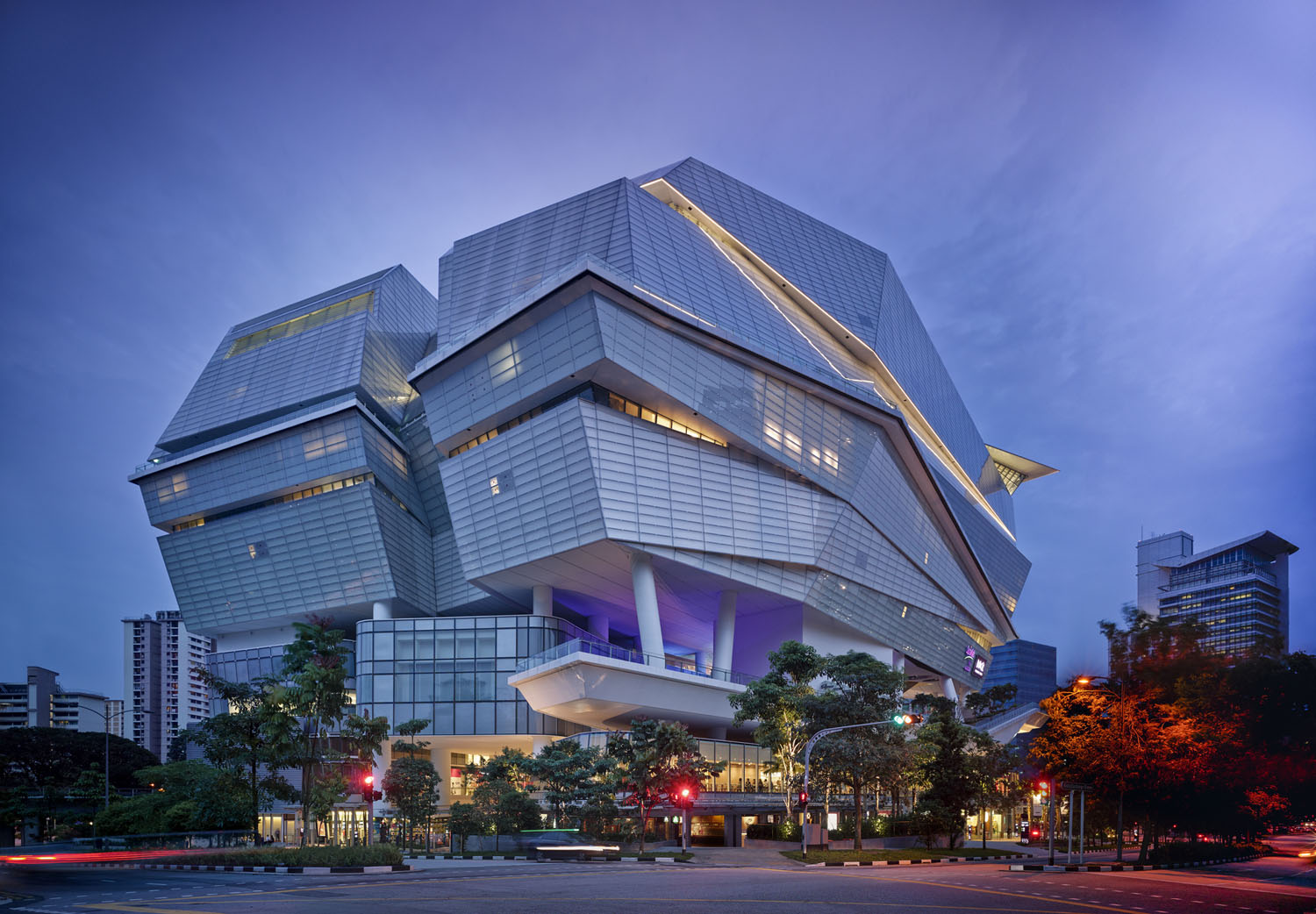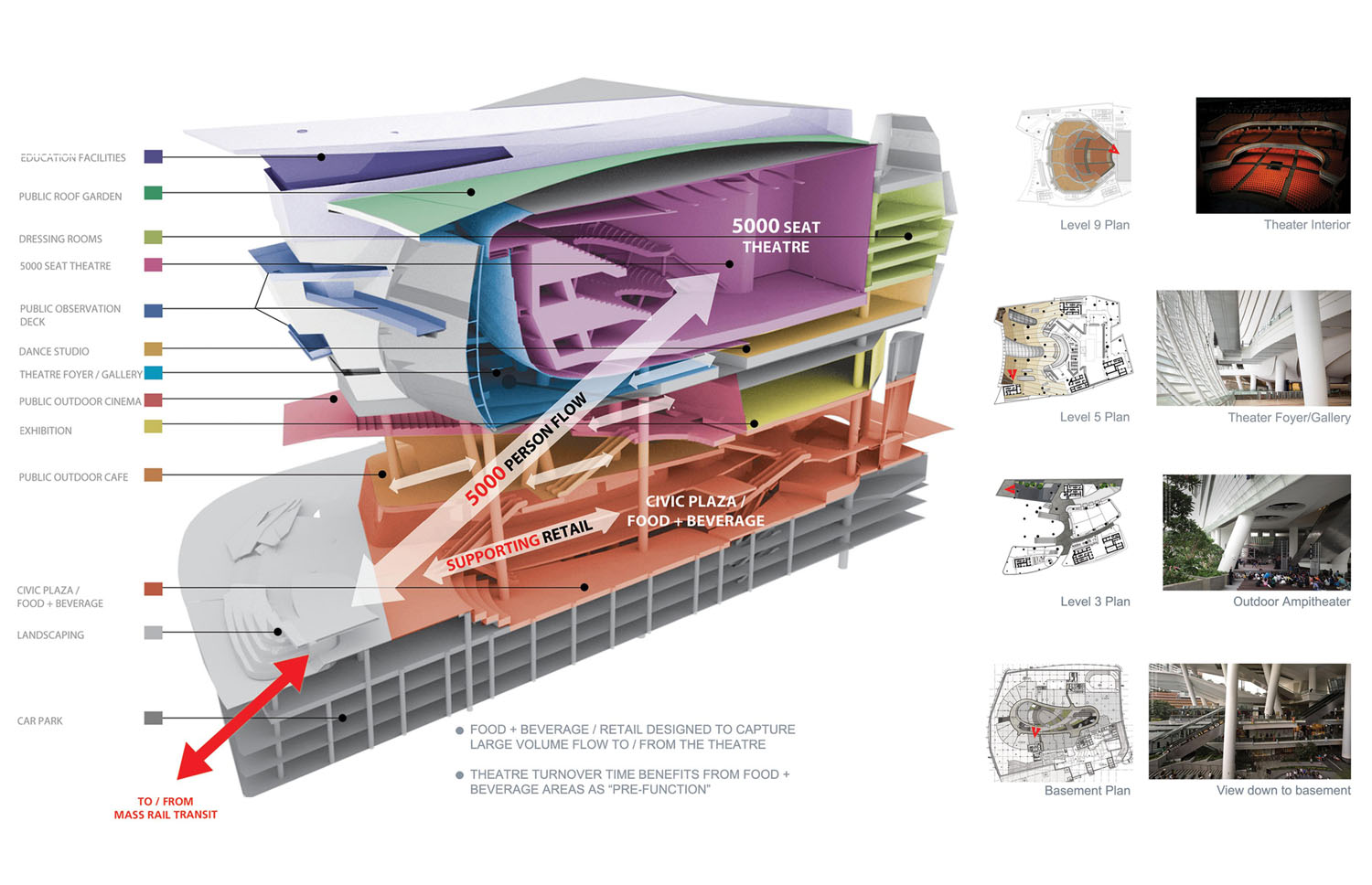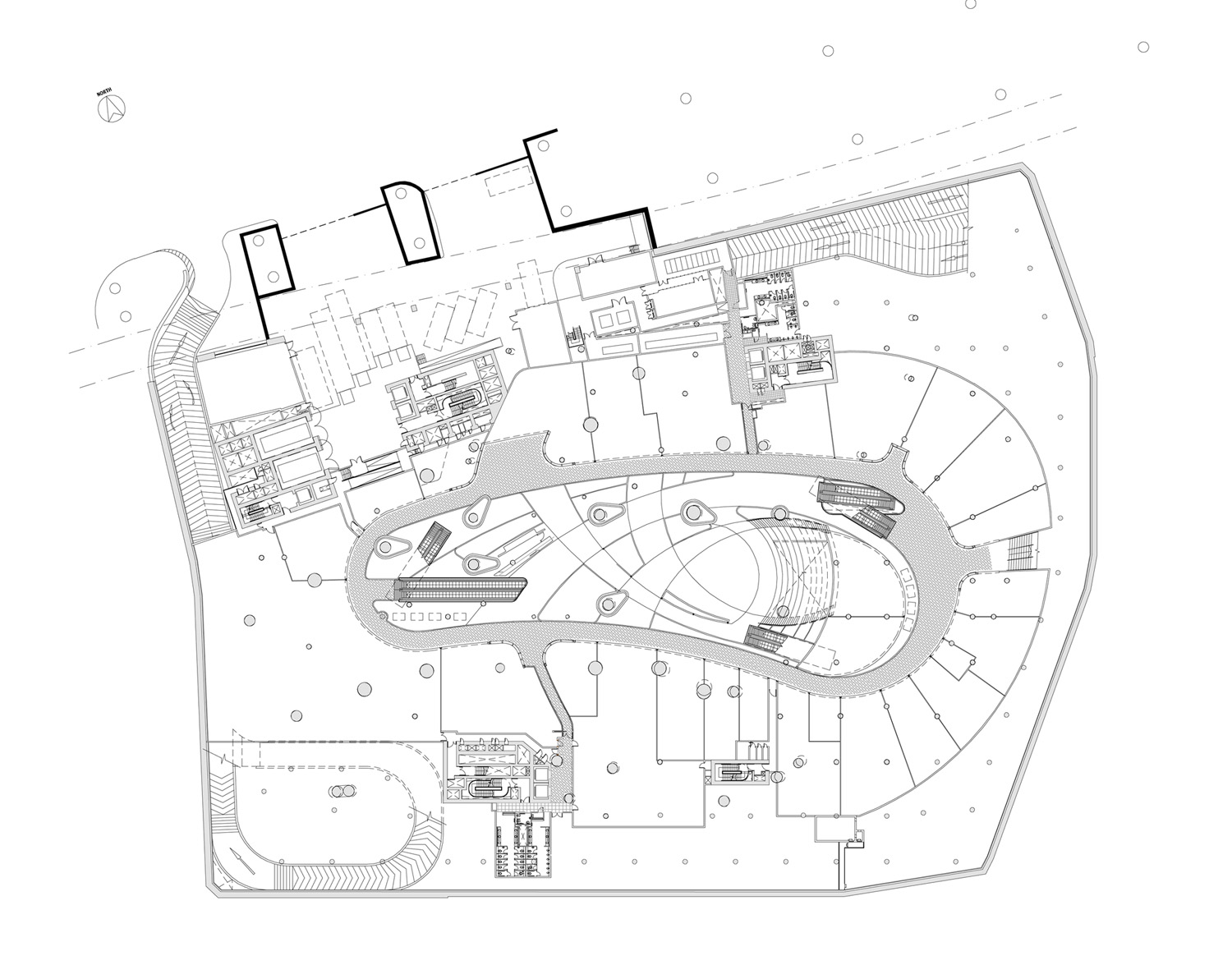The Star design by Andrew Bromberg of Aedas #architecture

©Courtesy of Aedas

©Courtesy of Aedas

©Courtesy of Aedas

©Courtesy of Aedas

©Courtesy of Aedas

©Courtesy of Aedas

©Courtesy of Aedas

©Courtesy of Aedas

©Courtesy of Aedas

©Courtesy of Aedas

©Courtesy of Aedas

©Courtesy of Aedas

©Courtesy of Aedas

©Courtesy of Aedas

©Courtesy of Aedas

©Courtesy of Aedas


©Courtesy of Aedas

©Courtesy of Aedas

©Courtesy of Aedas

©Courtesy of Aedas

©Courtesy of Aedas

©Courtesy of Aedas

©Courtesy of Aedas

©Courtesy of Aedas

©Courtesy of Aedas

©Courtesy of Aedas
Project: The Star
Location: 1 Vista Exchange Green, Singapore
Client: Rock Productions Pte Ltd and CapitaMalls Asia Limited
Area: 62,000 sqm
Year: 2012
Civil & Structural Engineer: Parsons Brinckerhoff; Thornton Tomasetti (Before DD Stage) Alt Limited Mott Macdonald Andrew Bromberg of Aedas Artec Consultants Inc Langdon & Seah Singapore Pte Ltd
Environmental Engineer: Arup Singapore Pte Ltd
Fire Engineer: Arup Singapore Pte Ltd Facade: Alt Limited
Mep: Mott Macdonald
Interior Design: Andrew Bromberg of Aedas
Theater And Acoustic Consultant : Artec Consultants Inc
Qs : Langdon & Seah Singapore Pte Ltd
Lighting: Lighting Planners Associates(S) Pte Ltd
Landscape: ICN Design International Pte Ltd
Programme: Mixed-use
Site Area: 19,200 sqm
Gross Area: Retail 24,000 sqm / Civic 8,000 sqm
Project Height: 75 metres
The project aims to become a vibrant civic node with a 5,000-seat cultural theater and a food-and-beverage oriented retail sector, working together to enhance each other’s viability. The site is located within the larger one-north master plan at Buona Vista, Singapore, which was established to create a regional centre for a wide variety of civic and cultural activities and promote innovation and creativity. In keeping with one-north’s bold vision it was paramount that the architectural response to the client’s brief married the functional and technical requirements of an iconic architectural form. In addition, the master plan sets out detailed planning constraints in terms of pedestrian connectivity, building envelope, height control, retaining of site topography and key site features, as well as retaining/transplanting of mature trees of significance. • Retention of the Natural Site Topography – The Urban Planning Guidelines required that the original topographical levels were to be retained and certain significant site features were to be emphasised. The building responds to the variance in levels (from +118.50 FFL to +111.00 FFL) by splitting the ground floor into Level 1 (accessing from the south, southeast and west) and Level 2 (accessing from the north and northeast). • The varying access and drop-off points that range from +111.0 FFL to +115.0 FFL are integrated into the open plaza, welcoming visitors from all major connection points. • The hilltop feature that rises from a ground level of +111.00 FFL to +118.50 FFL is re-created by a series of stepped terraces, housing also the VIP drop-off point at The Star Performing Arts Centre. • Pedestrian Connectivity – A naturally ventilated porous ground plate with a 35m high grand plaza at its core opens up to the main pedestrian flows from the MRT, one-north Park and other future developments. • Integration of Civic Spaces – Informal civic spaces are thoughtfully integrated into the lower floors of the building at Basement 1, Level 2 and Level 3, creating several landscaped communal zones where performances, exhibitions, gatherings and other civic activities can be hold. Constraints on gross floor area (GFA) available for the Civic and Cultural Zone also required MEP arrangements to be optimised and stacked to free up GFA for the more critical performances, lobby and circulation spaces within.
The Star Vista
The design for the retail space responds to the challenging site topography as the zone spirals inwards to address the major entry points and culminate in an open amphitheatre. The complex allows an array of rich and varying activities to take place inside the building whilst maintaining functionality. Faceted glass fissures dissolve big masses and create a dynamic composition of positive and negative spaces as well as a sense of balance. The south elevation is completely opened up and its facilities are clearly visible from outside. The building is an organic object opening to public discovery. One can crawl under, move through, transverse around and climb onto the complex via a series of ramps, escalators, terraces and public gardens. All circulations, movements and internal forms are soft and sinuous as if the civic activities have shaped the inside of the complex. Soft transition occurs vertically from the public, open retail to the private, enclosed theatre. The entire sequence and transition is linked visually and spatially to the 33m high grand foyer, connecting the below-ground retail and the top glass floor of the theatre’s main lobby and exposing the volume floating above.
The Star Performing Arts Centre
The civic and public components of The Star Performing Arts Centre are paramount and outwardly expressed. Same as The Star Vista, the south elevation is opened up to present the inner workings of the facility as a ‘visible section’. The mass of the theatre floating above is faceted with glass fissures, and utilises custom made ribbons with acoustic render for cladding, which help dissolve and break down the mass above, playing with a composition of positive and negative readings and in balance with the lower portions of solid and void. The theatre contains over 5,000 seats with two balconies, by far the largest venue of its kind in Singapore and is capable of staging musicals, concerts and other large scale performances. A cavity wall system prevents sound and vibrations coming in from the lobbies and external environment. The entire steel structure of the theatre is contained in a traditional ‘box within a box’ approach.
Sustainability
The Star is first and foremost a social building. Its design aims to provide an active and welcoming social interface for the local neighborhood through the publicly accessible forecourt and retail areas. A series of climate ameliorated outdoor spaces that accentuate natural air movement has been created to protect visitors against Singapore’s tropical rain and sun while at the same time providing outdoor patrons physiological cooling. To avoid confining and air conditioning public spaces as in many other parts of Singapore, the form of the building is shaped to collect prevailing northerly and southerly breezes and accelerate through the outdoor spaces, creating comfortable outdoor seating areas for patrons to socialize in a healthy outdoor environment. Canopies are installed to provide shelter from direct sun and rain, further collect breezes and control the visual contrast between inside and outside environments to enhance occupants’ sensory comfort. The aspiration for this building is to become an exemplar of both sustainable and passive design. With the use of the first principles in passive design, it complements and integrates with its surroundings. Computational Fluid Dynamics is used to optimize natural and physiological ventilation effects and create comfortable thermal conditions in the common and circulation areas that would otherwise have to be air conditioned. A hybrid ventilation strategy is also implemented to maximise comfort in areas where comfortable conditions cannot be achieved by natural ventilation alone. A mechanically assisted evaporative cooling system which employs high volume, low speed fans is deployed in the basement civic plaza, providing air movement that is required for outdoor thermal comfort while avoiding mechanical refrigeration. The orientation of the development was optimised by using building physics techniques. Daylight, solar heat gain, glare, and thermal comfort were all analysed. East and west exposure was reduced to minimise the overall solar heat gain. The design, performance and window to wall ratio of the facade were optimized to maximize daylight in occupied areas and also further control solar heat gain. In addition to the holistic passive design by the first principles described above, the development also implements a number of strategies to reduce overall energy consumption: • Energy efficient lifts and escalators with VVVF and sleep mode features reduce energy consumption. • Motion sensor lighting controls in common areas such as staircases and toilets reduce lighting consumption. • An underfloor displacement ventilation system in the auditorium reduces cooling requirements and energy consumption by delivering cool air at a slightly higher temperature at the occupied levels. • Ductless fans with CO sensors are used in the basement car parks, minimising system resistance and reducing energy consumption. • The open space retail design brings a huge energy savings in air conditioning. The current savings in air conditioning systems, air conditioning pumps and cooling tower for the development are 20%, 39.1% and 29% respectively. The overall energy saving is currently estimated at 15% compared to a non-sustainably designed development, and it is estimated to operate at about 499kWh/m2/ annum. These figures meet the requirements of the BCA Green Mark Gold rating. The design of the development also focuses on reducing potable water consumption and water pollution. Rain water and air conditioning condensate water is collected and used as alternative water source to irrigate site planting. This alternative water source is also used for the cooling tower, which is supplemented by the city’s NEWater (treated unused water) without the need for potable water. Besides, infiltration trenches throughout the site help reduce stormwater runoff, minimising stress on local infrastructure and reducing pollution. In addition to these initiatives, sub-meters for all major water uses are linked to the building management system to monitor water consumption and help set water saving guidelines in the future. In addition to maximizing human comfort and minimizing operational resource consumption, issues such as transportation, waste management and air quality were also considered when designing the development. The following list outlines the additional initiatives that are implemented within the site. • Original trees on site were removed during construction and restored post construction. • Recycled horticultural waste is used for compost. • Recycling bins are provided for operational waste diversion. • The building is located in close proximity to the Buona Vista MRT station and public bus stations, promoting the use of public transport. • Bicycle parking lots and associated facilities are provided. • Recharging stations for hybrid and electric vehicles are available in car parks. • A car park guidance system is installed to facilitate zoning and temporary closure of unoccupied areas when necessary. • A refrigerant leak detection system is installed to avoid leaking of refrigerants. • Low VOC paints and low formaldehyde adhesives were used to protect internal air quality. • Environmental programmes were adopted during construction to minimise the overall environmental impact. • Tenancy agreements limit tenants’ power consumption. This development achieves a high level of social, economic, environmental, and ecological integration into this dense urban environment and sets new standards for the design of progressive public spaces in the tropics.
Source: Andrew Bromberg of Aedas
m i l i m e t d e s i g n – W h e r e t h e c o n v e r g e n c e o f u n i q u e c r e a t i v e s
Since 2009. Copyright © 2023 Milimetdesign. All rights reserved. Contact: milimetdesign@milimet.com































